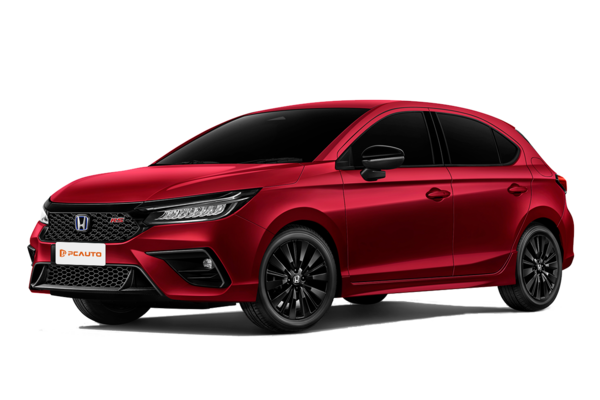Q
how to apply for oku car sticker
Applying for an OKU (Persons with Disabilities) car sticker in Malaysia is a relatively straightforward process. First things first, you’ll need to make sure you’ve got your OKU card issued by the Department of Social Welfare (JKM) – that’s the golden ticket here, an absolute must-have to start the application.
Next up, head down to your nearest JPJ (Road Transport Department) office, or you can go the digital route via the MySikap online portal. Either way, you’ll need to fill out the designated application form and attach copies of your OKU card, IC, and vehicle registration documents (like the car card or Grant).
Once your application gets the green light, you’ll receive the OKU sticker. Make sure to slap that bad boy on the front windshield where it’s clearly visible – that way, you can score those parking perks and access to dedicated facilities without any hassle.
Heads up, though: this sticker’s strictly for your use only. Lending it to someone else? Big no-no, and you could end up with a fine for that.
Now, the good stuff – with an OKU sticker, you’re typically entitled to free or discounted parking at public spots, plus priority parking bays. But here’s the thing: these benefits can vary a bit from state to state, so it’s smart to check the local rules beforehand to avoid any surprises.
If you hit a snag during the application, don’t sweat it. Just reach out to JKM or JPJ – they’re there to help and can walk you through any issues with more guidance.
Special Disclaimer: This content is published by users and does not represent the views or position of PCauto.
Popular Models
Related Q&A
Q
What is a good engine capacity for a car?
The ideal engine displacement for your car really depends on your daily needs and driving habits.
If you mostly drive in the city, a smaller engine—say, 1.5L to 1.8L—is more than enough. These engines are fuel-efficient, cheaper to maintain, and great for stop-and-go traffic. You’ll find this setup in a lot of Japanese cars or locally assembled models.
Now, if you frequently hit the highway or want more power, a mid-range engine (2.0L to 2.5L) makes more sense. It delivers better acceleration and stability at higher speeds, which is ideal for family cars or occasional long trips.
For those who crave performance or often carry heavy loads, a bigger engine—3.0L and above—will give you that extra punch. But keep in mind, fuel consumption and road tax costs jump noticeably.
Here’s the thing, though: turbocharging has changed the game. Smaller turbo engines—like a 1.4T or 1.5T—can deliver power close to larger engines while staying relatively efficient. And if you’re open to alternatives, hybrid systems use electric motors to take some load off the engine, reducing the need for big displacements.
My advice? Think about your budget and how you actually use the car. Also, factor in annual road tax and insurance—those costs can vary a lot depending on engine size.
Q
What is the engine capacity?
Engine displacement refers to the total volume swept by all the pistons in an engine's cylinders as they move from top to bottom dead center. It's typically measured in liters (L) or cubic centimeters (cc)—like 1.5L or 1500cc. Displacement directly impacts an engine's power output and fuel efficiency: generally, bigger displacement means more power but also higher fuel consumption.
These days, you'll find engines ranging from tiny 1.0L units in compact cars to 3.0L+ beasts in high-performance models. Thanks to turbocharging, smaller engines can now deliver power close to their larger-displacement counterparts. While hybrids and EVs don't use displacement to gauge performance, it remains a key spec for traditional combustion engines.
When car shopping, don't just focus on displacement—consider factors like transmission tuning and vehicle weight too. Many modern small-displacement turbo engines strike a solid balance between power and efficiency, making them great for daily driving.
Q
How much is a fuel tank for a car?
The cost of a car fuel tank can vary quite a bit depending on the model, material, and brand. For regular family cars, you’re usually looking at between RM500 to RM2,000. If it’s a metal tank or for a luxury vehicle, expect to pay more.
Tank prices also depend on capacity and design complexity—like larger SUV tanks or specialized hybrid fuel tanks, which tend to be pricier. On top of the tank itself, labor costs for replacement can range from RM200 to RM500, depending on the workshop’s rates.
Always go for OEM or certified aftermarket tanks to ensure safety and compatibility. It’s also a good idea to check your tank regularly for leaks or rust, especially during the rainy season when humidity can speed up corrosion. This helps extend its lifespan and avoids safety risks. If you notice a sudden drop in fuel efficiency or smell gasoline, it could be a tank issue—get it checked at a professional repair shop ASAP.
Q
What happens when the fuel tank is empty?
When the fuel tank is completely empty, the vehicle will stall due to lack of fuel supply, causing the engine to lose power. At this point, steering and brake assist systems will gradually weaken, requiring the driver to safely pull over immediately.
Modern fuel pumps rely on gasoline for cooling, so driving on empty for extended periods can lead to overheating and costly damage. Some models trigger warning lights and display remaining range when fuel is critically low, but relying solely on these estimates is risky—actual consumption varies based on road conditions, AC usage, and other factors.
A good rule of thumb? Refuel before the gauge dips below a quarter tank to avoid sucking up debris from the bottom of the tank. If you do get stranded, roadside assistance can deliver emergency fuel, though mixing different octane grades may affect engine performance—especially in high-performance turbocharged cars.
Pro tip: Regularly check your fuel filter to prevent clogs, and maintaining at least half a tank in humid climates helps minimize condensation buildup, which is crucial for tropical regions.
Q
What SUV has a 116 inch wheelbase?
Currently, there aren’t many SUV models on the market with a wheelbase stretching to 116 inches (around 2,946 mm). But one that stands out is the Ford Mustang Mach-E—its wheelbase hits exactly 116 inches. This all-electric SUV has drawn plenty of attention with its sporty design and solid range.
Then there are larger SUVs like the Lincoln Nautilus (roughly 117-inch wheelbase) and the Cadillac XT6 (about 116.7 inches), which come close in size, offering more cabin space and upscale features.
Wheelbase is a key factor in determining interior room—longer usually means better legroom and more stable handling, though it can also hurt maneuverability and parking ease. So when shopping for an SUV, don’t just focus on wheelbase; consider performance, specs, and how you’ll actually use the vehicle.
Q
What SUV has a 119 inch wheelbase?
Currently, SUVs with a 119-inch (approx. 302 cm) wheelbase include full-size models like the Chevrolet Tahoe and GMC Yukon. These vehicles typically offer three-row seating and robust powertrains, making them ideal for family trips or situations requiring ample space.
Wheelbase is a key factor in determining interior room. A longer wheelbase enhances ride comfort and high-speed stability, though it can reduce maneuverability on tight roads. If you're considering one of these SUVs, also pay attention to overall length and turning radius to ensure it suits your local driving conditions.
Full-size SUVs may not match the fuel efficiency of smaller crossovers, but their V8 or hybrid powertrains deliver superior towing capacity—perfect for those who need to haul heavy loads. Luxury brands may offer models with similar wheelbases, but expect higher prices and more premium features. Weigh your budget and needs before deciding.
Q
Does wheelbase affect fuel efficiency?
Yes, wheelbase does affect fuel efficiency. Generally speaking, a longer wheelbase adds weight and increases aerodynamic drag, which can slightly reduce mileage since the engine has to work harder to overcome these factors—especially at higher speeds. But the actual impact depends on the specific model and driving conditions. Other elements like body design, engine technology, and driving habits often play a bigger role in fuel consumption.
That said, vehicles with a longer wheelbase tend to offer better stability and ride comfort, making them ideal for long-distance driving, while shorter wheelbases improve agility for city driving. So when choosing a car, it’s worth balancing fuel economy with your actual needs.
One more thing: modern advancements—lightweight materials, aerodynamic tweaks, and efficient powertrains—have significantly reduced the effect of wheelbase on fuel efficiency. Instead of overthinking this one factor, focus on the overall performance and real-world fuel economy.
Q
What are the benefits of a shorter wheelbase?
Cars with shorter wheelbases have a clear edge in agility. With the front and rear wheels closer together, they turn sharper—perfect for tight city streets or twisty roads. Parking in cramped spots? No sweat.
You’ll notice less body roll in corners, and with the right suspension tuning, they feel more responsive behind the wheel. That’s why hot hatches and compact SUVs with short wheelbases are a hit among younger drivers.
Bonus: The shorter chassis sheds weight, boosting fuel efficiency, and the reduced drivetrain loss often means peppier acceleration. Just keep in mind, it might trade off a bit of high-speed stability, and rear legroom can be tight (though clever seating layouts help).
Fun fact—sports cars lean into short wheelbases for sharper handling, while off-roaders use them to improve break-over angles. It’s all about priorities.
Q
What engine is in a 2014 Holden Colorado?
The 2014 Holden Colorado offered two turbocharged four-cylinder diesel options – a 2.5L unit pushing out 110kW and 350Nm, and a more potent 2.8L variant delivering 147kW and 440Nm. Both engines feature common-rail direct injection, striking a balance between fuel efficiency and strong low-rev torque that's perfect for towing or hauling loads.
Built as a workhorse ute, the Colorado's powertrain prioritizes durability and low maintenance costs. Buyers could choose between a five-speed manual or six-speed auto transmission. These diesel mills really shine when tackling steep inclines or carrying payloads – their torque-rich nature delivers effortless climbing and smooth acceleration. Modern diesel tech also means they're far more refined than old-school oil-burners, with noise and vibration levels approaching petrol-engine smoothness.
Pro tip: Stick to the recommended service intervals (especially diesel filter changes) and always use quality fuel to keep these engines performing at their best.
Q
Is the 2018 Mercedes AMG GT reliable?
The 2018 Mercedes-AMG GT has proven to be fairly reliable overall. Its hand-built 4.0L V8 biturbo engine—tuned by AMG—delivers brutal power while maintaining decent mechanical robustness, with relatively few reported major issues. That said, expect higher running costs than your average commuter car. You'll chew through brakes and tires much faster, and those AMG-specific parts don't come cheap.
The tech suite can be a bit fussy at times—we're talking occasional glitches like infotainment gremlins or false sensor warnings—but most issues are sorted with a software patch or minor fixes. Stick religiously to the factory maintenance schedule using genuine fluids and components, and you'll dodge 90% of potential headaches.
Driving enthusiasts will find the visceral exhaust note and razor-sharp handling worth every penny, though that low-slung front splitter means you'll be dodging potholes like they're landmines. If you're shopping used, prioritize examples with full dealer service history and get a prepurchase inspection focusing on the transmission, suspension, and cooling system—these are the big-ticket items that could ruin your day.
Popular Cars
Model Year
Car Compare
Car Photo
Latest Q&A
Q
What does engine capacity refer to?
Engine Capacity refers to the total volume of all cylinders inside the engine, usually expressed in cubic centimeters (cc) or liters (L), such as 1.5L or 1500cc, It directly reflects the total amount of air and fuel mixture that the engine can inhale and compress in a complete cycle. A larger engine capacity usually means higher power output because more fuel and air participate in combustion, producing stronger explosive force to push the piston. However, engine capacity is not the only factor determining performance. Turbocharging, fuel injection technology, etc. can also allow small displacement engines to perform close to or even better than large displacement engines. In addition, engine capacity also affects fuel consumption and road taxes. Although large displacement engines have abundant power, their fuel consumption is relatively high, and they may need to pay higher annual road taxes, while small displacement engines are more economical and suitable for daily commuting. When choosing a vehicle, You can balance the relationship between engine capacity and fuel economy according to your driving needs.
Q
How do I find engine capacity?
To find your vehicle's engine capacity, the easiest ways are to check the owner's manual or the engine bay sticker – you'll usually see it clearly marked as something like 1.5L or 2.0T. Another option is to look at your vehicle registration card (Geran) or check the JPJ website for detailed specs, where the engine size will be listed.
Engine capacity is measured in liters (L) or cubic centimeters (cc), with 1.0L equaling 1000cc. It tells you the total volume of all cylinders and gives a rough idea of power and fuel efficiency. Generally, bigger engines deliver more power but may drink more fuel.
That said, performance isn't just about size – tech like turbocharging and fuel injection also plays a big role. If you're mainly commuting, a smaller engine could be the smarter pick, while drivers who want more punch might prefer a larger or turbocharged setup.
Still unsure? Your best bet is to call an authorized service center for the exact specs.
Q
How many cc is a 1.2 litre engine?
A 1.2L engine has a displacement of 1,200cc—since one liter equals 1,000 cubic centimeters (cc), simple math does the trick. Engine displacement measures the total swept volume of all cylinders, serving as a key indicator of power output. Generally, bigger displacement means more muscle, though at the cost of higher fuel consumption.
In our market, 1.2L engines are commonly found in budget-friendly compact cars, striking a solid balance between fuel efficiency and adequate pep for city driving. But here’s the catch: While displacement matters, real-world performance hinges on engineering tricks like turbocharging or direct injection—tech that can squeeze extra power from small engines while keeping thirst for fuel in check.
If fuel economy tops your checklist, a 1.2L powertrain deserves a look—just don’t skip the test drive. Numbers tell part of the story; how it *feels* on the road tells the rest.
Q
How many cc is a V8 engine?
The displacement (cc) of a V8 engine isn't a fixed number—it varies based on the vehicle model and manufacturer's design. Typically, you'll find them ranging between 4.0L and 6.2L, which translates to roughly 4000cc to 6200cc. Classic American muscle cars, for example, often pack a 6.2L (6200cc) V8, while some high-performance sports cars or luxury models might use a smaller 4.0L (4000cc) turbocharged V8.
Thanks to its symmetrical eight-cylinder layout, a V8 delivers both raw power and smooth acceleration, making it a favorite for drivers who crave performance or that big-displacement thrill. But remember, displacement isn't the only factor in power output. Modern tech like turbocharging, direct injection, and variable valve timing can squeeze out more efficiency and horsepower from even a smaller V8.
With tighter emissions regulations, many automakers are now exploring hybrid systems or downsized V8s to balance performance and eco-friendliness. Going forward, V8 development will likely focus more on tech upgrades than just upping displacement.
Q
What is the best engine capacity?
Choosing the right engine displacement depends on your personal needs and driving habits. Generally, a 1.5L to 2.0L engine strikes a good balance between power, fuel efficiency, and maintenance costs—making it ideal for daily commutes and family use. These engines are tried-and-true, easy to service, and relatively economical on fuel.
If you frequently take long trips or crave stronger performance, engines above 2.0L deliver better acceleration and highway stability, though at the cost of higher fuel consumption and road tax. Meanwhile, small turbocharged engines (like 1.0L or 1.2L turbos) have gained popularity in recent years. They offer near-equal punch to larger engines while sipping less fuel and keeping tax bills low—perfect for city driving or budget-conscious buyers.
Hybrids and EVs, on the other hand, sidestep traditional displacement concerns altogether, relying on electric motors for efficiency. As tech evolves, raw displacement may matter less than overall energy effectiveness in the long run.
View MoreLatest News

Euro NCAP releases final batch of 2025 crash test results: Four models, including the facelifted Mazda CX-5, receive five-star ratings
Kevin WongDec 18, 2025

Perodua Traz receives ASEAN NCAP five-star safety rating, surpassing Toyota Yaris Cross
RobertDec 18, 2025

Why hasn't Perodua launched the Traz equipped with e-Smart Hybrid?
JohnDec 18, 2025

Perodua Traz VS Toyota Yaris Cross, where does the Traz fall short?
RobertDec 18, 2025

Jaecoo J5 is planned to be launched in Malaysia in the first quarter of 2026
JohnDec 18, 2025
View More




 Cars
Cars














